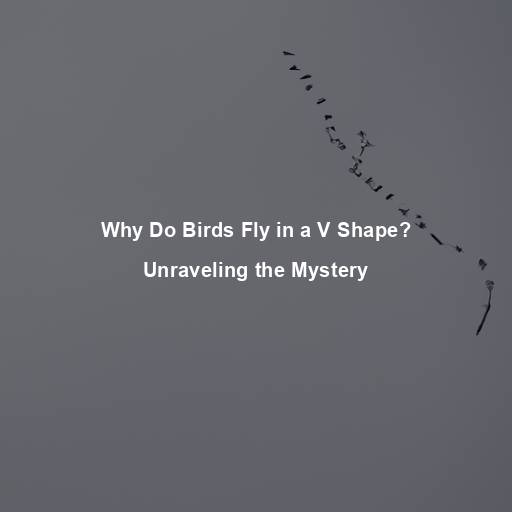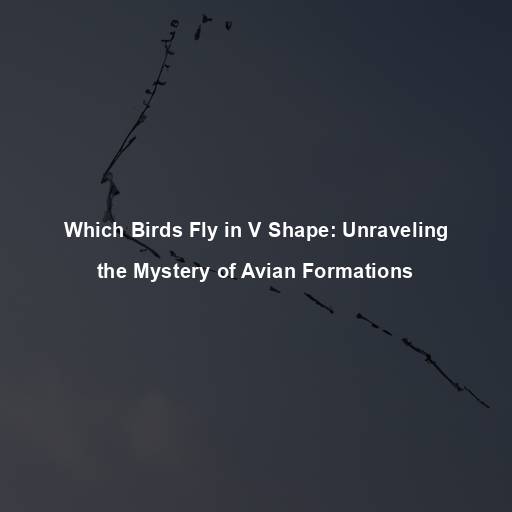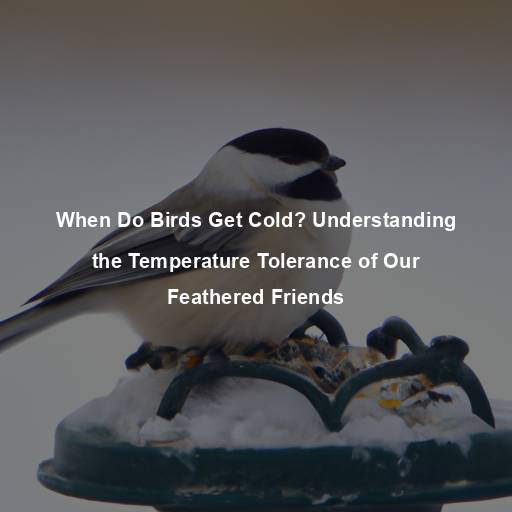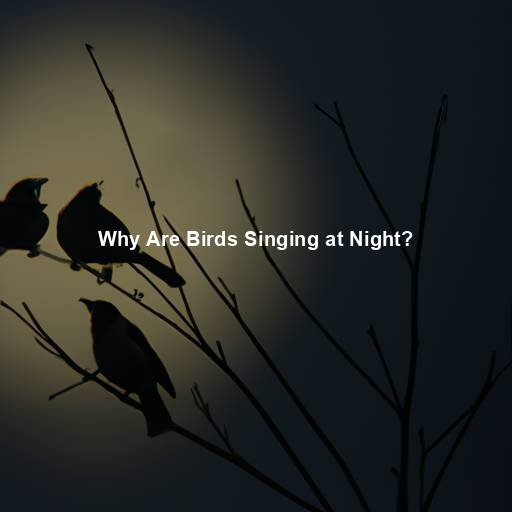Do Birds Know When They Are Full?
Last Updated on October 18, 2023 by Evan
Contents [hide]
Throughout history, the captivating allure of birds has bewitched our hearts, leaving us in awe of their mesmerizing flights and stunning plumage. Their iridescent diversity keeps us guessing, as we ponder the enigma of their eating habits. It begs the question: do these ethereal creatures possess an innate instinct to know when their hunger is sated, or do they devour their meals heedlessly until sustenance eludes them? Join us as we embark on a journey into the realm of avian intricacies, unravelling the mysteries behind these extraordinary creatures and their enigmatic feeding behaviors.
Understanding Avian Digestion
To comprehend whether birds are aware of their satiety, we must first understand how their digestion works. Birds have a unique digestive system that differs from mammals. They lack a stomach with multiple compartments like cows or sheep. Instead, their digestive tract consists of a crop, proventriculus, gizzard, and intestines.
Crop
The bird’s neck houses a remarkable storage chamber known as the crop, a peculiar pouch that beckons curiosity. Within its confounding confines, birds have the ability to devour copious amounts of sustenance in a swift and voracious manner. However, the true marvel lies in its purpose; while not directly engaged in the intricate process of digestion, the enigmatic crop serves as an essential intermediary in the bird’s intricate feeding rituals, permitting the regurgitation and subsequent nourishment of themselves or their fledglings. Its perplexing nature beckons us to delve deeper into the bewildering world of avian feeding habits.
Proventriculus
Deep within the labyrinth of the avian digestive system lies a mysterious and enigmatic organ known as the proventriculus. Pulsating with life, it orchestrates the intricate ballet of digestion with its secreted enzymes and acids, meticulously breaking down the food that graces its presence. Like a grand conductor of a symphony, this obscure glandular stomach sets the stage for the commencement of the extraordinary journey of nutrient extraction from the aliments that are consumed.
Gizzard
The gizzard, also known as the muscular stomach, is where the real magic happens. It is a powerful organ that uses muscular contractions and small stones or grit swallowed by the bird to grind and crush the food into smaller particles. This aids in mechanical digestion, allowing the bird to extract the maximum amount of nutrients from its food.
Intestines
Birds, just like their mammalian counterparts, rely on their intestines to absorb vital nutrients from food and dispose of waste. These complex organs serve a crucial function in the digestion process, ensuring that birds obtain the necessary nourishment for their survival. From nutrient absorption to waste elimination, the intricacies of avian intestinal functions perplex and fascinate alike.
Bird Feeding Behavior
Birds exhibit a wide range of feeding behaviors depending on their species, diet, and habitat. Some species are opportunistic scavengers, while others are specialized hunters or nectar feeders. Understanding these feeding behaviors can provide insights into whether birds have a sense of satiety.
Opportunistic Feeders
Many bird species are opportunistic feeders, meaning they consume whatever food is readily available. This behavior is often observed in urban environments where birds scavenge for scraps of food left behind by humans. In such cases, it is unlikely that birds have a clear sense of satiety, as they will continue to eat as long as food is accessible.
Specialized Hunters
On the other hand, birds that rely on hunting for their food display a different feeding behavior. Predatory birds, such as eagles or falcons, have a keen sense of when to hunt and when to stop. They possess exceptional visual acuity and can spot prey from great distances. Once they have successfully caught their prey, they may eat their fill and store the excess for later consumption.
Nectar Feeders
Nectar-feeding birds, such as hummingbirds, have a unique feeding behavior that revolves around consuming sugary nectar from flowers. These birds have a high metabolic rate and need to feed frequently to sustain their energy levels. However, they also exhibit a remarkable ability to regulate their intake of nectar. Once they have consumed an adequate amount, they will move on to other activities and return to feed later.
The Role of Hormones
When it comes to controlling appetite and ensuring satiety, the intricate interplay of hormones takes center stage in the animal kingdom, extending its reach even to our feathered friends. Among the avian community, two pivotal hormones, ghrelin and leptin, take charge of the intricate dance that governs their feeding behavior. Through an intricate web of interactions, these hormones navigate the complex path of avian appetite regulation, leaving no room for simplicity.
Ghrelin
Delving into the complex world of hormones, we come across one intriguing character known as ghrelin. This enigmatic substance has earned its nickname as the “hunger hormone,” igniting our appetite like flickering flames. In the avian realm, our feathered friends also dance to the tune of ghrelin, as its levels surge when hunger hits, compelling them to embark on a quest for sustenance. However, just as it kindles the fire within, ghrelin eventually wanes, signaling a state of contentment and satiety.
Leptin
In the intricate dance of hormones, leptin emerges as the enigmatic “satiety hormone,” playing a perplexing role in the battle against hunger. Originating from those plump little fat cells, leptin stands as a sentinel, sending cryptic signals to the brain when the body’s energy reserves reach their quota. As if defying all logic, elevated levels of this elusive hormone quiet the rumblings of our insatiable appetites and fill us with a sense of bewildering contentment. It seems that among our feathered friends, those blessed with abundant leptin levels possess the uncanny ability to navigate the labyrinth of food intake regulation with utmost finesse.
Experimental Evidence
Bird enthusiasts and researchers alike are flocking to the fascinating question of avian self-awareness when it comes to satisfying their winged appetites. Dive into a feather-filled journey where scientists have embarked on a series of experiments to probe the depths of bird cognition and feeding habits. Prepare to be amazed as these studies unravel the enigmatic world of satiety awareness among our feathered friends, peering into the magnificent mind of birds and shedding light on a captivating mystery.
Food Deprivation Studies
In the riveting world of food deprivation studies, our feathered friends find themselves in a perplexing predicament. Scientists put birds through periods of fasting, only to observe their subsequent feeding behavior with bated breath. The jaw-dropping results have revealed a burst of astonishing revelation – birds, it seems, possess an undeniable instinct to compensate for their missed meals by devouring larger quantities when sustenance finally graces their beaks. This mind-boggling finding hints at a deep-rooted drive within these avian creatures to satisfy their nutritional needs, leaving even the most astute researchers in awe.
Self-Regulation Experiments
Intriguing experiments involving our feathered friends have shed light on their remarkable ability to self-regulate their food intake. These studies have delved into the depths of avian behavior, revealing that birds possess a peculiar knack for adapting their feeding patterns in response to varying circumstances. When faced with scarcity, these birds tend to unleash their appetite, indulging in a feast to sate their hunger. Conversely, when food abounds, they exercise restraint, showing a remarkable understanding of their own satiety levels.
Food Availability
Birds, these remarkable creatures of the sky, possess an uncanny ability to adapt and navigate their feeding habits based on the ever-changing availability of sustenance. When the nourishment that sustains them becomes scarce, a primal hunger awakens within these feathered beings, compelling them to consume larger quantities when food eventually reveals itself. In stark contrast, when bountiful delicacies grace their existence, birds astutely govern their intake, sensibly opting for more modest portions to maintain a delicate balance.
Seasonal Changes
The ever-changing menu of Mother Nature can truly baffle our avian friends. When the pantry is brimming with delights during times of love and travel, birds indulge in a feast fit for champions, filling their bellies in anticipation of the energy-draining adventures that lie ahead. Yet, during the dark days of scarcity, birds must adapt and tighten their belts, reducing their intake to make every morsel count, as they bravely navigate the treacherous path to the land of plenty once more.
Social Interactions
Birds are social creatures, and their feeding behavior can be influenced by the presence of other individuals. In some species, dominance hierarchies form, where higher-ranking birds have priority access to food sources. Lower-ranking birds may adjust their feeding behavior accordingly, consuming less food or feeding at different times to avoid conflict. Social cues and interactions can play a significant role in how birds perceive their satiety levels.
The Complexity of Avian Cognition
Understanding whether birds know when they are full goes beyond studying their feeding behavior and hormonal regulation. It delves into the realm of avian cognition and the complex workings of their brains. While birds have smaller brains compared to mammals, they exhibit remarkable cognitive abilities.
Problem-Solving Skills
When it comes to our feathered friends, it seems there’s more than meets the eye. Birds have been caught in the act, showing off some awe-inspiring talents that would make even the most seasoned puzzle enthusiast green with envy. Take the remarkable crows, for instance, who have been spotted cunningly using sticks as tools to extract mouthwatering grubs from the depths of tree bark. If this doesn’t leave you pondering the depths of avian intellect, then I don’t know what will.
Memory and Spatial Awareness
It’s truly fascinating how birds exhibit remarkable memory and spatial awareness. These feathered creatures possess an awe-inspiring talent for navigating vast distances during their migratory journeys, relying on a combination of internal maps and distinct landmarks. Their ability to recall crucial information such as food sources, nesting sites, and other significant locations truly showcases the depth of their cognitive abilities.
Vocal Communication
When it comes to expressing themselves, birds truly take the cake. Their melodious voices have captivated the hearts of humans for centuries, leaving us in awe of their extraordinary communication skills. From mimicking our very own human speech to crafting intricate melodies, these feathered virtuosos prove time and time again that their cognitive prowess knows no bounds. Their ability to adapt and learn is simply breathtaking, reminding us of the sheer wonders hidden within the avian kingdom.
Mirror Self-Recognition
It’s astounding to think that in the vast kingdom of birds, a select few have unveiled a remarkable ability to recognize themselves in mirrors. Yes, you heard it right! Magpies and pigeons, those feathered creatures we pass by without much thought, have defied our expectations and showcased what can only be described as a moment of self-awareness. This revelation not only sheds light on the complexity of avian cognition but also begs the question: could these birds hold a mirror to our understanding of consciousness itself?
Unraveling the Mysteries of Avian Satiety
As researchers continue to explore the intricacies of avian biology and behavior, the question of whether birds know when they are full remains a captivating topic. With each new study, we gain a deeper understanding of the complexities of avian satiety and the cognitive abilities that birds possess.
However, it is essential to remember that the concept of “knowing” when one is full may differ between species. Birds have evolved diverse feeding strategies to adapt to their environments, and their perception of satiety may vary accordingly. While some bird species may have a clear awareness of their satiety levels, others may rely more on external cues or innate drives to regulate their food intake.
As we continue to unravel the mysteries of avian satiety, it is crucial to approach the topic with an open mind and a willingness to learn from these incredible creatures. Birds are a testament to the wonders of nature, and their feeding behaviors offer a glimpse into the intricate balance between instinct, cognition, and environmental factors.
As we witness birds go about their daily routines, from their graceful flights to their enchanting melodies, let us marvel at the intricate tapestry of their existence. While their concept of fullness may differ from ours, the way they effortlessly navigate the fine line between hunger and contentment is a true testament to the wonders of the natural realm. Embrace the burst of awe and perplexity as you observe these feathered creatures, reminding us of the intricate beauty that surrounds us.
FAQs: Do Birds Know When They Are Full?
Do birds have the ability to recognize when they have had enough food?
Have you ever pondered on the enigmatic wonder of birds and their innate ability to discern satiety? Just like us mere mortals and the diverse array of creatures that roam this earth, birds possess the remarkable capacity to recognize when their hunger pangs have been appeased. However, the intricacies of this phenomenon are shrouded in a veil of perplexity, as the unique signals that indicate fulfillment can vary among avian species. Delving deep into the labyrinth of ornithological biology, we uncover a captivating dance of hormones and chemical signals within the avian brain, orchestrating the delicate balance between nourishment and cessation. Thus, when their nutritional cravings are sated, these winged marvels possess an innate wisdom to abstain from further feasting, regardless of the abundant cornucopia spread before them.
How do birds know when they are full?
In the mysterious realm of avian physiology, an enigmatic structure called the hypothalamus takes the stage. Functioning as the maestro of feeding behavior and appetite, this brain region harbors inscrutable secrets. Like a symphony conductor, it receives cryptic signals from the depths of a bird’s digestive system. Emissaries of hunger and satiety, such as the enigmatic hormone cholecystokinin, dance through this neural terrain, orchestrating a delicate balance between nourishment and energy requirements. Only through this intricate interplay can birds unlock the elusive sensation of fullness.
Can birds overeat if food is abundant?
Have you ever wondered if birds could overindulge in their feathery feasts? Well, wonder no more! It turns out that these feathered creatures can indeed find themselves in a perplexing predicament of overeating when an abundance of food is within their beak’s reach. In the wild, however, birds are masters of adapting to their surroundings and have honed their instinct to regulate their food intake based on resource availability. It’s when we bring our avian friends into captivity or provide an unnatural surplus of sustenance that their delicate self-regulating mechanisms can get thrown off balance, potentially leading to health complications. So, as fascinating as it is, we must approach the concept of birds overindulging with a mix of curiosity and caution.
Are there any signs that indicate a bird is full?
Deciphering the mystical language of birds can undoubtedly leave even the most seasoned birdwatchers in a state of bewilderment. However, amidst this enigmatic world, one can glean a few hints as to when our feathered friends have reached their fill. Observe closely as they partake in slow and deliberate dining, savoring smaller portions or luxuriating in intermittent nibbles. Their once insatiable curiosity may wane, mirrored by a dwindling desire for sustenance. And fear not, for these avian epicureans may retire to their grooming routine or seek respite, akin to our own post-meal tranquility.
Do baby birds know when they are full?
As tiny bundles of feathers, baby birds possess a fascinating instinct that guides them towards recognizing the satisfying feeling of a full tummy, much like their adult counterparts. However, this enchanting process takes hold during their fledgling phase – a pivotal window of accelerated growth and transformation – where their hunger pangs demand constant attention. Devoted parents tirelessly tend to their avian offspring, carefully ensuring that their hunger is appeased until they achieve blissful satiety. As these fledglings advance in age and independence, a captivating shift unfolds, unveiling their own internal compass that navigates them towards deciphering their personal cues of contentment, allowing them to regulate their food intake with captivating precision.
Remember that individual bird species may display slightly different behaviors and responses to satiety based on their unique ecological adaptations and evolutionary history.







